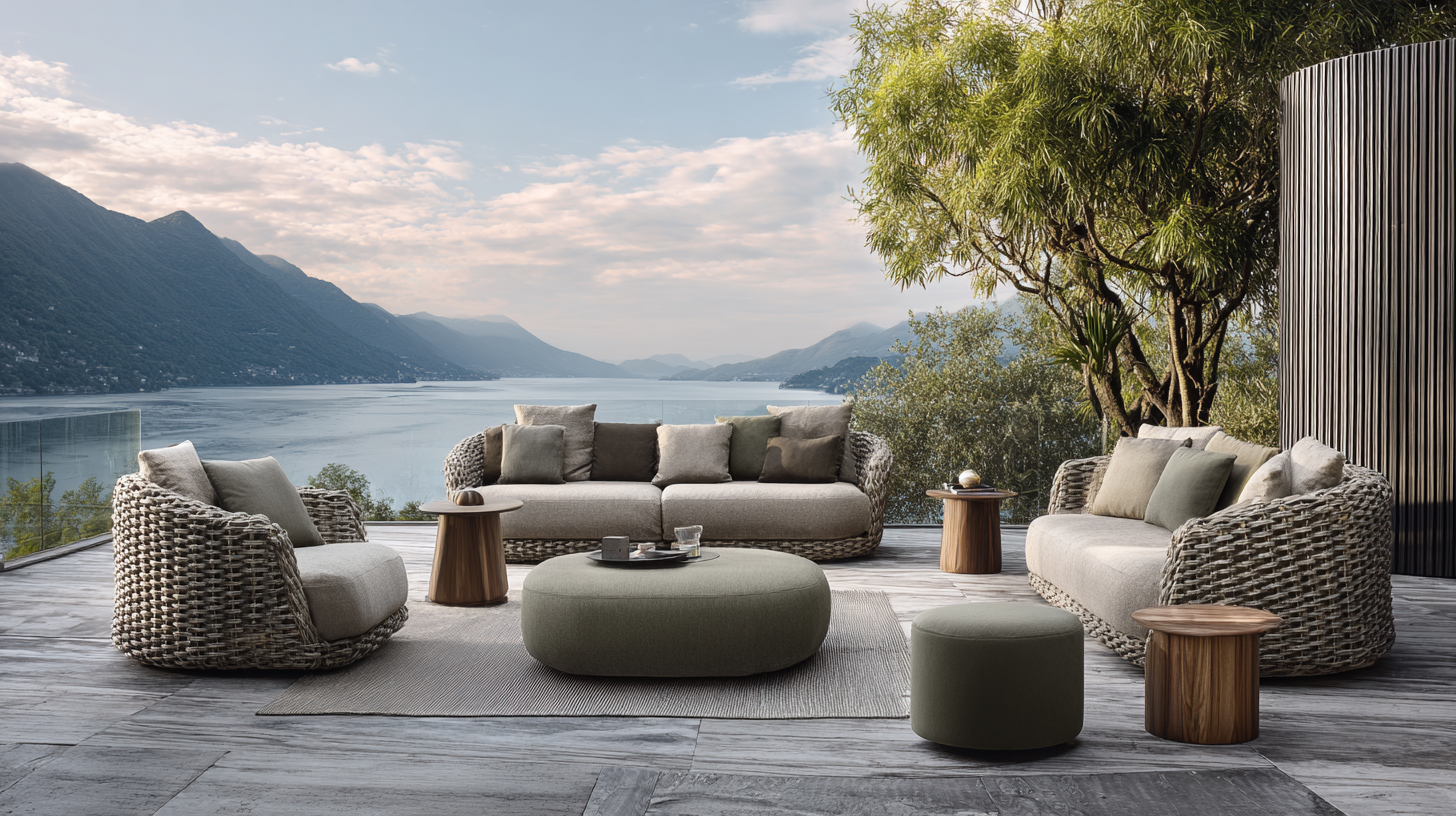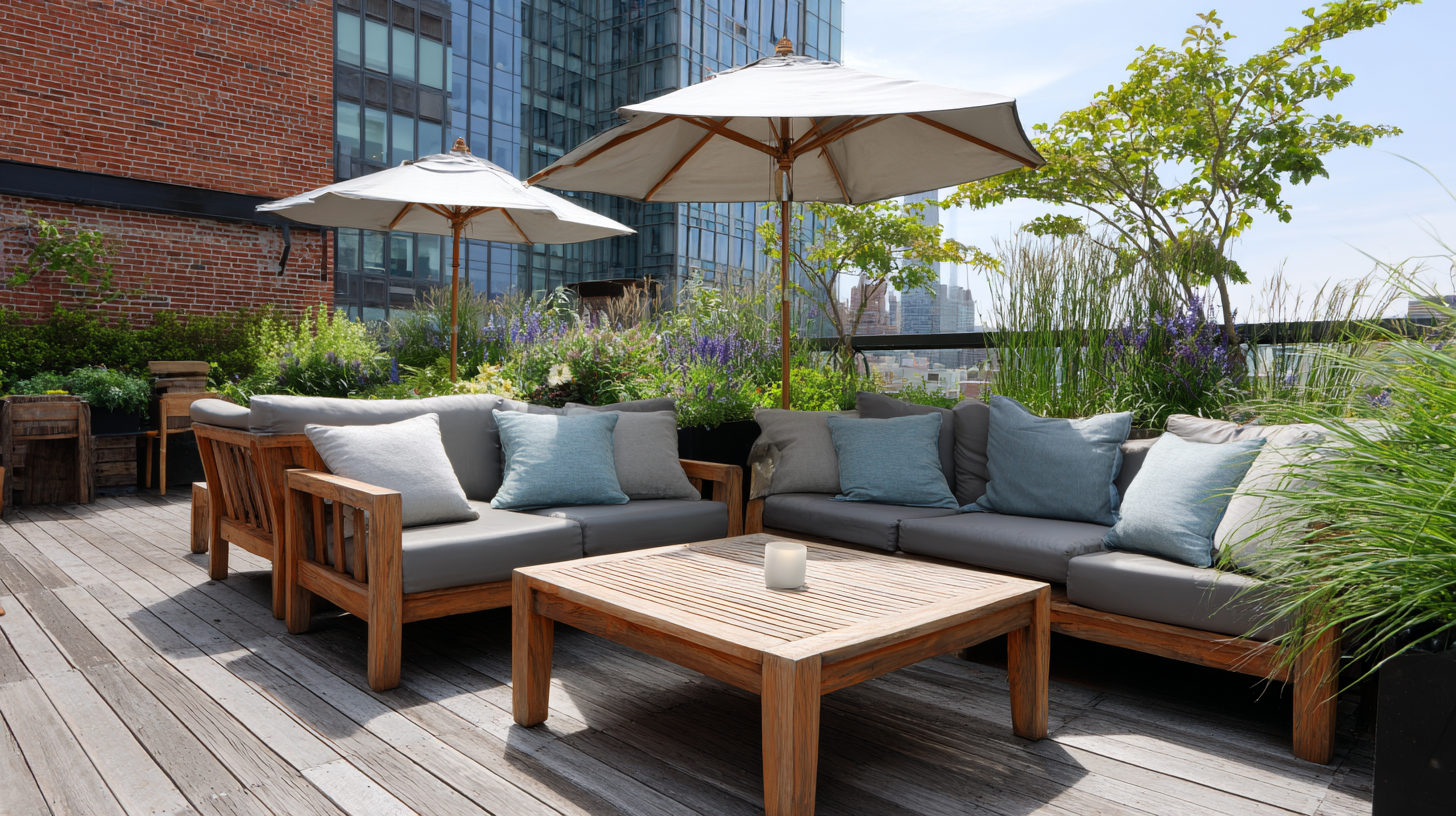How to Navigate Import and Export Certifications for Best Outdoor Seating Furniture
In the ever-evolving landscape of the outdoor seating furniture industry, navigating the complexities of import and export certifications is crucial for businesses aiming to thrive. According to a recent report by Market Research Future, the global outdoor furniture market is projected to reach $14.35 billion by 2025, with a compound annual growth rate (CAGR) of 5.95% from 2019 to 2025. This growth underscores the increasing consumer demand for quality outdoor seating furniture, driving manufacturers to ensure compliance with international standards and regulations. As more companies seek to expand their market reach, understanding the ins and outs of certification processes becomes essential. From environmental considerations to safety standards, this blog will guide you through the pivotal steps required to successfully import and export outdoor seating furniture, ensuring your products meet market demands while adhering to regulatory requirements.

Benefits of Understanding Import Regulations for Outdoor Seating Furniture
Understanding import regulations is crucial for anyone involved in the outdoor seating furniture market. Knowledge of these regulations not only helps in ensuring compliance but also enhances efficiency in the import process. Familiarity with certification requirements can streamline customs clearance, reducing delays that might affect inventory and sales timelines. Additionally, businesses that are well-versed in import protocols can avoid potential fines and penalties that arise from non-compliance, thus safeguarding their bottom line.
Moreover, understanding these regulations provides a competitive edge in the market. By ensuring that outdoor seating furniture adheres to safety and quality standards, companies can build trust with their customers. When consumers are confident in the quality and safety of the products they are purchasing, they are more likely to make a purchase and recommend the brand to others. Thus, a solid grasp of import regulations not only protects businesses but also fosters a loyal customer base, ultimately contributing to long-term success in the outdoor furniture industry.
Key Certifications to Ensure Quality and Safety in Outdoor Furniture
When it comes to ensuring quality and safety in outdoor furniture, certification plays a crucial role. Key certifications such as the American National Standards Institute (ANSI) and the International Organization for Standardization (ISO) can help consumers make informed decisions. These certifications assess durability, materials, and resistance to environmental factors, ensuring that your outdoor seating furniture withstands the test of time.
Tip 1: When shopping for outdoor furniture, look for products that display ANSI or ISO certification marks. This indicates that the items have been tested for quality and safety standards, giving you peace of mind in your investment.
In addition to national certifications, regional certifications such as the Forest Stewardship Council (FSC) ensure that the materials used in your outdoor furniture are sourced sustainably. This not only contributes to environmental conservation but also reinforces the quality of the furniture through reputable sourcing practices.
Tip 2: Check for FSC certification on wooden furniture pieces. This is a great way to ensure that the wood is sourced responsibly, providing a sturdy and ethical choice for your outdoor seating.
The Role of Environmental Standards in Importing Outdoor Seating
When importing outdoor seating furniture, understanding and adhering to environmental standards is paramount. These standards are not only a legal requirement but also reflect a commitment to sustainability, which is increasingly valued by consumers. According to a report by the Global Sustainability Alliance, 72% of consumers prioritize environmentally friendly products, making compliance essential for market competitiveness.

To navigate these regulations, it's crucial to familiarize yourself with certifications such as the Forest Stewardship Council (FSC) and the Global Organic Textile Standard (GOTS). These certifications ensure that materials are sourced responsibly and that the manufacturing processes adhere to eco-friendly practices. Importers should also pay attention to the EU Eco-Label criteria, as it sets stringent requirements for environmental performance, impacting the overall acceptability of products in European markets.
Tips:
- Conduct thorough research on the specific environmental certifications required in your target market to avoid costly compliance issues.
- Develop relationships with certified suppliers to streamline the import process and enhance your product's sustainability narrative.
- Regularly update your knowledge of environmental standards to stay ahead of market trends and consumer expectations, ensuring long-term success in importing outdoor seating furniture.
Maximizing Profitability: Navigating Export Certification Processes
Navigating export certification processes is crucial for manufacturers aiming to maximize profitability in the outdoor furniture market. According to a report from the Global Trade Association, the outdoor furniture sector is projected to reach a market value of $21 billion by 2025, highlighting the importance of understanding various certification standards to ensure compliance. Navigating through these certifications can be complex due to differing regulations across countries, which can impact a company's ability to sell its products internationally.

For example, in the European Union, outdoor furniture must adhere to specific safety and environmental standards, such as the EN581 series, which focuses on safety requirements for outdoor furniture. Companies failing to meet these requirements may face substantial fines or, worse, a complete ban on their products.
Moreover, a study by Market Research Future indicates that companies that invest in obtaining the necessary certifications see a 30% increase in export sales on average, emphasizing the financial benefits of compliance. By prioritizing these certifications, manufacturers can not only streamline their export processes but also enhance their brand reputation in a competitive global marketplace.
Industry Insights: Trends in Certification and Compliance for Outdoor Furniture
As the outdoor furniture market continues to evolve, understanding the trends in certification and compliance becomes increasingly important for manufacturers and retailers alike. According to recent market insights, the global wooden furniture market is projected to expand significantly, increasing from USD 618 billion in 2025 to an estimated USD 989.8 billion by 2034. This growth underscores the necessity for robust certification processes that assure consumers of the safety, sustainability, and quality of their outdoor seating choices.
Recent reports indicate that the global Testing, Inspection, and Certification (TIC) market is expected to reach USD 352.24 billion by 2034, growing at a CAGR of 3.4%. This growth is driven by heightened consumer awareness regarding product safety and compliance with environmental standards. The outdoor furniture sector, in particular, must navigate a complex web of certifications—ranging from material sourcing to manufacturing processes—to align with these evolving standards and meet consumer expectations. Adopting rigorous TIC practices not only boosts brand reputation but also serves as a crucial competitive edge in a rapidly growing market.
How to Navigate Import and Export Certifications for Best Outdoor Seating Furniture
| Certification Type | Description | Region | Compliance Standards | Average Time for Certification |
|---|---|---|---|---|
| FSC Certification | Ensures responsible sourcing of wood products. | Global | FSC STD 01-001 | 3-6 months |
| GREENGUARD Certification | Tests for low chemical emissions for healthier indoor air quality. | North America | CA 01350 | 2-4 months |
| ISO 14001 | Focuses on effective environmental management systems. | International | ISO 14001:2015 | 6 months - 1 year |
| TUV Certification | Indicates product safety and quality assurance. | Europe | Various EN standards | 1-3 months |
| SCS Indoor Advantage | Aims for low VOC emissions and environmental sustainability. | North America | SCS-EC-001 | 2-6 months |